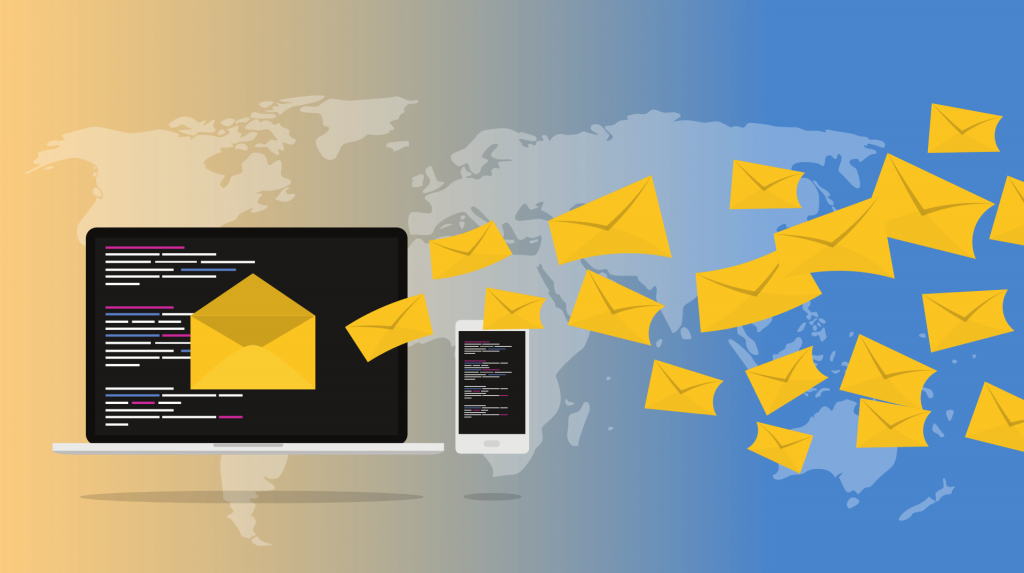
Got subscribers? Check. Sending emails? Check. Wish you had more subscribers and better opens rates? Cannot check hard enough, right?
When it comes to email marketing, it is the simple things matter. Often times, going back to basics is something that is heavily overlooked. Making sure that you have the fundamentals covered is the key to success. Don’t try to be too fancy or too lazy. It is too easy to waste time and precious project time overthinking things or trying to do too much. It is also easy to become lackadaisical in your efforts because you are not seeing success. Let’s cover the three things that can set up to obtain more subscribers and boost your open rates. You should already be doing these items, but here is a reminder to either start or change how you do it.
Attract More Subscribers
Adding more subscribers than you lose is the key to list growth. On average 56% of your subscribers in a given year. Bottom line, you need to attract attention to your brand and obtain interest in signing up for your emails.
You can do this through offline and online methods. Offline is as simple as using an phone or tablet app like iCapture or simply using pen and paper. iCapture allows you to obtain sign ups while offline, then add them to your email service provider (ESP) once you have an internet connection. You can also just use a notes app as well.
When collecting subscribers offline, there is often a delay in adding them to your ESP. Make sure to let as little time pass before adding them as possible. You want to be able to send a welcome email to your new subscribers to remind them of their interest in your brand. More on this shortly. People are busy. They may forget about signing up and ignore or delete your emails, or worst mark them as spam.
For your online efforts, the best option is using a sign-up form. This will be on your website or landing page, and there should be two versions.
The first will be a static form somewhere on your website. This means that it is always there. It can be located on the top, bottom or side of your site. One negative thing about this version is that it is only visibility on a portion of your website and will not be visible when potential subscribers scroll on your site.
Some of the benefits are that it is always there because it is not dismissible and you can add verbiage to entice subscribers to sign up for your emails. This can be in the form of a download, coupon, or something else of value.
You can also integrate the form with your ESP to immediately send out a welcome email, building trust and engagement.
Another strategy is to use a pop-up or pop-over form on your website. This means that when someone visits your website, a form will appear, allowing them to sign up for your emails.
Be careful with these types of forms. If someone visits your website for the first time, they will want to learn about your brand and what you have to offer. There is no need to immediately serve them a pop-up form. It may make them leave your website.
Best practices for sign-up form is to have it be timed, dismissable, and prevent serving them to return visitors. Set the form to appear after 15-30 seconds so that it gives visitors to your site to browse around for a short while before seeing the form. You can also have it appear after they scroll a certain amount of your website, say 60% down.
Your pop-up (or over) form should either disappear after short period of time, say 30 seconds, or offer a way to close it if there is no interest.
Last, if the form you are using allows, set it to not appear if the visitor returns to your website within 15 or 30 days.
For any sign up form, only ask for the information you need to start a relationship and provide value to the subscriber. Normally, this is an email address and first name. Obtaining the first name allows you to personalize your emails, to help increase opens and engagement.
At times, you might be able to get away with asking for more information, like business name or birthday if you are going to offer a download or birthday coupon.
Send a Welcome Series
Immediate gratification. It is currently a social norm. We want things faster and cheaper. For your email campaigns, you need to meet that need. Once a subscriber gives you their email address, online or offline, you need to welcome them and remind them why they signed up and what they can expect to receive from you.
It is best to send a series of emails. This will help build a relationship and get people used to engaging with your emails. Oh, and do not forget to include any incentives that you offered, such as a discount or download.
The first email simply says thank you, and explains what and when the recipient should expect in subsequent emails. Will you be including new product information, helpful information, sale items, testimonials, etc? How often will you send emails? Once a week, once a month? Tell your subscribers so that they are not waiting for your next email or worse, thinking that they are receiving too many. Set expectations on the front end so that you are not trying to scramble to salvage the relationship later on.
The second email continues to build the relationship you started. It can include content such as reviews, product info, refund and exchange policies, or information such as company history or what your company does in the community. Tug at their heart strings. Get them to like you and learn about you.
The third email can contain information on how to connect with you on social media. You can also include social proof in this email. Social proof can be online reviews, testimonials, tweets or screen grabs of other positive mentions or social posts. The purpose of this email is to further build trust and also extend the relationship to your social channels since people consume content from brands on multiple channels.
Three emails is good, but more is better. Think of other content that you can use to further extend your welcome series. For the most part, the series will have a “set it and forget it” cadence. This means that it will continue to work for you without needing to create new content. Of course, you may need to go back and edit some of the email content, but will rarely need to re-create a whole email.
The cadence is set, so you do not have to worry about clicking send. The first email is set to go as soon as subscribers are added. This is immediate if you have a sign-up form on your website that is integrated with your ESP. Otherwise will be triggered once you manually add them.
Then your second email can go our after two days after they are added to a list, the third five days later, and determine a good timeframe for any remaining emails. I leave it up to you to determine the cadence for your email series.
The welcome series is designed to nurture subscribers to a purchase. It will inform them about your company build trust and information that will help them make a decision to do business with you and also refer others as potential customers.
Adhere to Good List Hygiene Practices
“ I love to remove subscribers from my list” said not marketer ever. You spend your time and money growing your list, so why would you want to proactively remove them?
Well, there is good reasons to. It helps your email campaigns become more effective and successful. By cleaning your list of disengaged subscribers, it will help in two ways.
The first is that you will be looking at your actual open rates. If you have a good amount to subscribers on your list that have not opened an email in a long time, say six months, it is skewing your metrics. It is pulling them down. You need to be measuring your open rate against your engaged subscribers. Once you clean your list of disengaged subscribers, watch your open rate instantly improve. This is what you should have always been looking at and measuring your success and challenges on from the beginning.
The second way list hygiene will help your email campaigns is that more of your emails will be placed in the inbox rather than the spam folder. When you send emails, your efforts are being scrutinized. The recipient services and providers (Gmail, Yahoo, and private domains) are grading you.
You see, there are positive and negative things that happen to your emails when the subscriber receives them. Positive items are things like opening, clicking, forwarding your emails, as well as starring, marking as important and pulling them out of the spam folder.
Negative items would include bounces, marking as spam, unsubscribing, and ignoring. Yes, ignoring. Your grade is lowered when people ignore your emails. The more that ignore your emails from the same email provider the worse.
If you have a high grade, like an “A”, more of your emails will be delivered to the inbox, where a lower grade of “D” or “F” will result in more emails ending up in the spam or junk folder.
The best way to increase your grade is to send emails that are valuable to your audience and clean your list of disengaged subscribers. It is OK to clean your list. Not everyone is going to love your emails. People are busy or maybe they only wanted to buy one thing from you and do not need your emails any more. They can always come back.
Take a look at your subscribers. It you send one a week, you should identify subscribers that have not opened a single email from you in the last six months. If you send once a month, the timeframe can be increased to one year.
If you go ahead and rip the band-aid off and simply remove the disengaged subscribers, I will give you a gold star. It is hard to break up with someone, but is always best to get it over with as quickly as possible.
You can also send out one to three emails and try to win over some of the subscribers that you have identified as not engaged. Normally, you will probably see around a 2% retention rate from using what is called a re-engagement campaign.
Send an email to the subscribers you identified asking them if they still want to receive emails from you and keep those that have engaged with that email.
For the remainder, wait about a week and send a second email information these subscribers that you would like to continue a relationship with them, but need to know if they still want your emails.
A third and potentially last email will inform those subscribers that have not engaged with the previous two that they will be removed from future mailings.
By adopting a regular list hygiene process, you will enjoy a high grade, stay in the good graces of the inbox police, and enjoy optimal inbox placement. Spam should be something you eat, not where your emails should be delivered to.
By following these three best practices, your email campaigns will remain effective and manageable. These are the fundamentals. Once you master these or revisit them, then you can go on and add more things like email automation, split testing, and segmentation.
Best of luck on your next campaign and let me know how it goes!
Author
-

Hank is an author, speaker, podcast host and Director of Operations at Kickbox, a Ziff Davis company. With a passion for all things digital and social, combined with more than 25 years of experience in sales and marketing, he has been dubbed the Digital Marketing Infotainer because he makes marketing fun and successful.
View all posts
